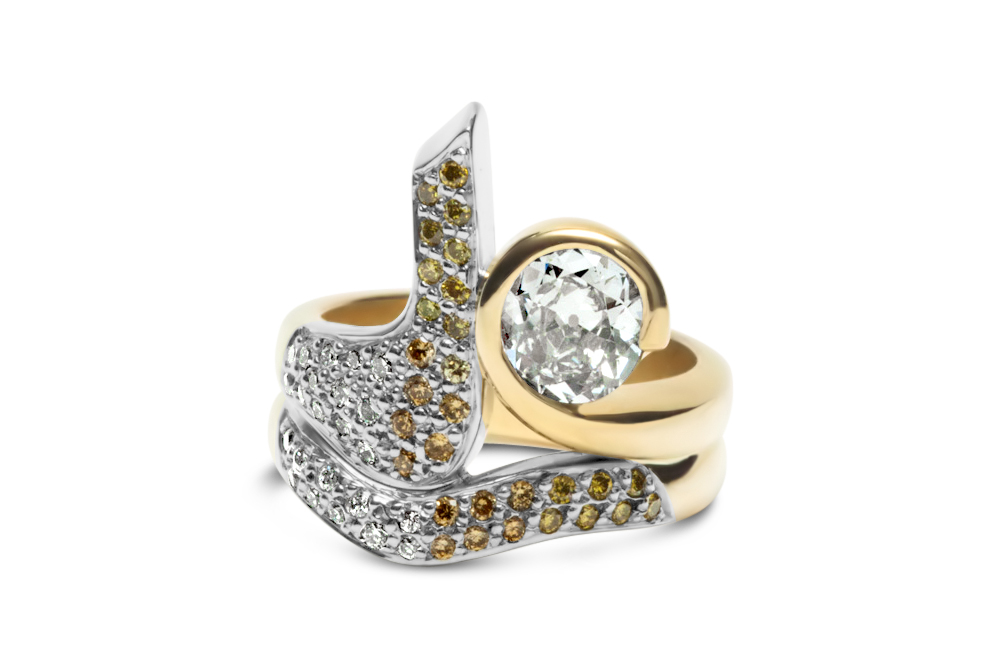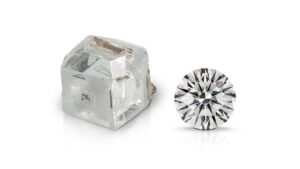

 Opening your shopping bag...
Opening your shopping bag...
Tag us in your proposal story on our socials and receive 10% off your wedding rings!

![$featured_image['alt']](https://diamondboutique.com.au/wp-content/uploads/2022/05/raw_diamond.png)
In today’s market, consumers are becoming increasingly more concerned with buying ethically sourced products. Whether it’s food, clothing, or diamonds, people prefer to support those businesses that produce products with fewer environmental impacts in a cruelty-free manner. Thanks to Leo and his blockbuster movie “Blood Diamond”, people are becoming more aware and are making smarter purchasing choices.
Ethically sourced diamonds are diamonds that are mined through fair humanitarian practices. They are mined without exploiting the environment or miners with fair wages and working conditions.

Blood diamonds, also known as conflict diamonds, are defined by the United Nations (UN) as diamonds mined in areas controlled by rebel forces. They mine and sell diamonds to fund war against their internationally recognised government.
The UN created The Kimberly Process (KP) to regulate the diamond industry to prevent the trade of conflict diamonds. The core of this regime is the Kimberley Process Certification Scheme (KPCS) which outlines the rules that govern the trade in rough diamonds. Participants must meet a set of requirements to be certified to trade. At Diamond Boutique, all our diamonds are certified as we take great care to support ethically sourced products.

Laboratory grown diamonds are the most ethically sourced. Also known as man-made, cultured, or engineered diamonds, they’re diamonds created in a laboratory. The same materials and advanced technology are used to replicate the conditions as well as the growing process of how natural diamonds are formed beneath the earth’s surface. Synthetic diamonds have a crystal structure with the chemical and optical properties of mined diamonds.
Due to the identical physical, chemical, and visual characteristics of man-made diamonds and natural diamonds, it is extremely difficult to differentiate the two. To the naked eye, they look identical. Lab-grown diamonds possess almost every feature of their natural counterpart, from scintillation to sparkle. However, they have some minor differences in trace elements that can only be detected using specialised equipment by trained gemologists. Nowadays, lab-grown diamonds are becoming increasingly popular. They appear to be the best diamond alternative based on their similarity to natural diamonds but at a more affordable cost. When buying lab-grown diamonds, it is essential to ensure that the diamond comes with a gem certification that identifies them as laboratory grown.

Buying vintage and second-hand diamond jewellery is a more sustainable way to shop. Plus, there is something magic about vintage jewellery. They have many secrets and stories untold with their new owners in the next chapter. Not only is the vintage style irresistible and unique, but it’s also often made by skilled artisans to stand the test of time. At Diamond Boutique we have meticulously curated a collection of antique, vintage, and second-hand jewellery with some pieces dated circa 1890.

We take our part in working towards a more ethical and sustainable business very seriously. All our diamonds are Kimberly Process certified, and we aim to reduce our footprint through other methods where possible. Our friendly jewellers are happy to answer any questions you have about where our diamonds are sourced. When shopping for a diamond, make sure you do your due diligence to ensure they are ethically sourced and free from cruelty to mankind and the environment.

